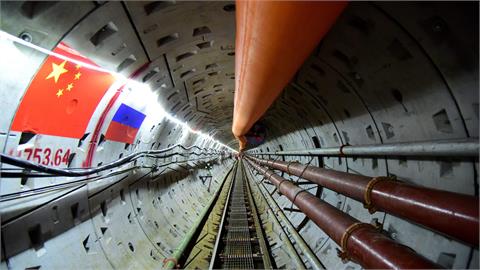Romania is involved in building several natural gas pipe lines with
neighbouring countries. That comes in addition to the Nabucco gas
pipeline, which was supposed to link Turkey, Bulgaria, Romania, Hungary
and Austria and which was abandoned in the summer of 2012 due to the
failure of securing gas suppliers. In terms of projects, it should be
noted that in 2010, the foundation was laid for the Azerbaijan- Georgia-
Romania- Hungary interconnector. It involved the transport of Azeri
natural gas through Georgia, and the building in that country of a
liquefying terminal. That would be followed by the transport through the
Black Sea, building a terminal to revert to gas in Romania, and the
subsequent transport of the gas through pipelines crossing Romania and
Hungary towards Central Europe.
More recently, on 22 April this year,
Bulgaria, Greece and Romania signed an agreement to connect their
natural gas networks, a project that would require investments worth
about 220 million Euros. This so-called "vertical corridor" is estimated
to become operational by 2018. Also, in May, in Riga, the foreign
ministers of the Czech Republic, Slovakia, Hungary and Romania signed a
declaration of intent on linking together and developing their gas
supply networks. Here is Romanian Foreign Minister Bogdan Aurescu:
"It
is very important that the text makes reference to the diversification
of both gas sources and supply routes, and even makes reference to the
proposal made by the European Commission to set up an energy union. Last
but not least, its main aim is to promote the implementation of
interconnections in the bi-directional system between the states that
have signed this joint declaration. It is a document of intent. It is a
political declaration, and on its basis the parties will be able to
further work together in seeing through the projects that you know quite
well. I remind you of the joint project run by Bulgaria, Romania,
Hungary and Austria. And here is Slovakia joining this inter-connection
system. Also, I remind you of the vertical corridor which Romania is
promoting. All those projects are based on the inter-connection of
national natural gas transport systems."
Natural gas expert Dumitru
Chiselita told Radio Romania about the situation of interconnections
that exist or are being built between Romania and neighbouring
countries:
"The interconnection between Romania and Ukraine is at two
points. In the north of the country we have Mediesu Aurit, in Satu Mare
County. In the east, we have Isaccea. In the west there is an
interconnection with Hungary, and the fourth interconnection, which was
inaugurated last year on August 27, is with the Republic of Moldova, a
small scale one. At the same time, we are building an interconnection
between Romania and Bulgaria, at the Giurgiu-Ruse point. Most of the
existing interconnections, three out of four, more precisely, are
unidirectional; there are two interconnections between Romania and
Ukraine, which right now only flow from Ukraine to Romania. "
Those are the interconnections through which Romania imports gas from Russia. Dumitru Chiselita:
"These
are solely from the exterior to the interior. There is also a third
interconnection, from Romania to the Republic of Moldova. Therefore
there is a single output, from Romania to Moldova. The fourth
interconnection, the one with Hungary, is basically the only
bi-directional interconnection with an EU member country. In terms of
capacity there is a lack of proportionality. The capacity for input from
Hungary to Romania is 1.75 billion cubic meters, while the output
capacity from Romania to Hungary is only 0.087 billion cubic meters. In
terms of the future Giurgiu-Ruse interconnection, we are talking about
an input-output capacity which is designed to reach 1.5 billion cubic
meters."
Dumitru Chiselita also talked about the declaration of
intent signed in May by the foreign ministers of Romania, Hungary,
Slovakia and the Czech Republic regarding cooperation in natural gas
transport. We asked him if the exiting Romania-Hungary interconnection
was enough from the point of view of that declaration:
"We are
talking about a capacity of 0.087 billion cubic meters from Romania to
Hungary, and as such we can only qualify that as 'petty border trade',
with the appropriate air quotes. Romania and Hungary can only exchange
natural gas for regions close to the borders, at least for the gas
flowing from Romania to Hungary. For such a project, capacities have to
be either built up further, or reconsidered, they need billions of cubic
meters capacity, like we have at Mediesu Aurit. Beyond those points, we
have to also adapt the national transport system so that it can meet
the technical requirements of the transportation systems in neighbouring
countries."
On March 5th, Romania started exporting gas to the
Republic of Moldova through the Iasi-Ungheni pipeline, which was
officially inaugurated last August. This year, the Republic of Moldova
is going to import from Romania over one million cubic meters of gas, at
a price of 255 dollars per thousand cubic meters, compared to 332
dollars, as it pays for gas from the Russian Federation. Right now,
talks are being held with foreign partners for extending the
Iasi-Ungheni pipeline to Chisinau, which would need 60 million Euros, of
which 10 million Euros would be put up by the European Union.
(RRI / balkans.com)
Related content
Monday, 22 December 2025
Monday, 22 December 2025
Wednesday, 17 December 2025
Wednesday, 17 December 2025



